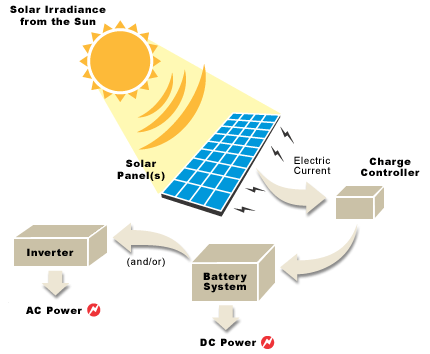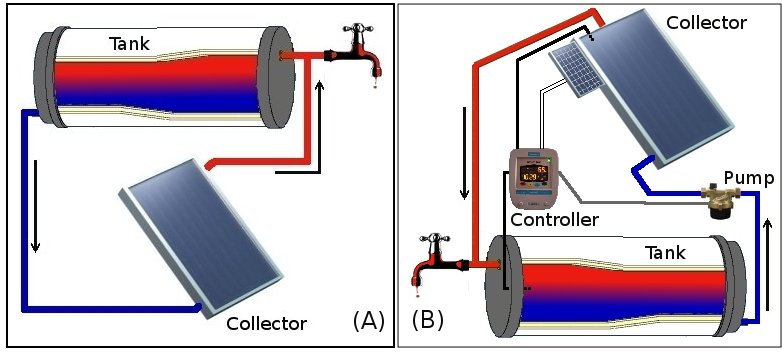Solar power generation has emerged as one of the most rapidly growing renewable sources of electricity and thermal energy.
 What is Solar Photovoltaic energy?
What is Solar Photovoltaic energy?
Is the process of energy from the sun in the form of sunlight is transformed into electricity through photovoltaic cells made mainly of silicon. Hence, Photo meaning “light” and Voltaic meaning “electricity”), is the conversion process from sunlight directly into electricity. A module is a group of photovoltaic cells connected electrically and packaged into a frame (more commonly known as a solar panel), which can then be grouped into larger solar panel arrays. Solar PV panels work by collecting protons from the sun, which displace neutrons, and create a flow of electrons or electricity. In some cases the electrons generated are stored in a battery via a charge controller which controls the rate the battery is charged. An inverter converts the power generated by the solar panels and later stored in the battery from DC current to AC current, making it usable in homes as a direct electricity supply. The energy generated can be used in any electrical or electronic equipment or device.
For more information view our Blog article “Electricty from the Sun“
Other applications for solar energy include hot water systems and solar powered pumping.
What is Solar Hot Water energy?
It is the capture of solar radiation with it being directly converted into heat using solar collectors. There are two types of solar thermal Hot Water generating energy systems: passive and active. A passive system requires no equipment, like when heat builds up inside your car when it’s left parked in the sun or with the natural flow of rising hot water in the system illustrated in diagram A . An active system requires some way to absorb and collect solar radiation and then store it, with the aid of a pump, as illustrated in diagram B. Solar thermal energy is mainly used to heat water for bathing and swimming.
The core of a solar water heater is a solar collector and a storage tank. A solar collector is basically a glazed, insulated box with a dark-colored interior and, usually, a bunch of tubes or passageways for water flow. (Glazing is a coat of material, typically glass, that aids in heat retention.) The solar collector turns the sun’s radiation into heat, which heats the water that passes through it and stores it in a hot water storage tank, also known as a boiler, which holds the hot water ready to be consumed.
Solar power generation has several advantages over other forms of electricity and heat energy generation:
Reduced Dependence on Fossil Fuels: Solar energy production does not require fossil fuels and is therefore less dependent on this limited and expensive natural resource. Although there is variability in the amount and timing of sunlight over the day, season and year, a properly sized and configured system can be designed to be highly reliable while providing long-term, fixed priced hot water and electricity supply.
Environmental Advantages: Solar power production generates hot water and electricity with a limited impact on the environment as compared to other forms of thermal energy and electricity production.
Matching Peak Time Output with Peak Time Demand: Solar energy can effectively supplement electricity supply from an electricity transmission grid, such as when electricity demand peaks in the summer
Modularity and Scalability: As the size and generating capacity of a solar system are a function of the number of solar modules installed, applications of solar technology are readily scalable and versatile.
Flexible Locations: Solar power production facilities can be installed at the customer site which reduces required investments in production and transportation infrastructure.
For more information view our Blog article “Hot Water from the Sun“
Contact us for more information.
 English
English  Portuguese (Brazil)
Portuguese (Brazil) 





